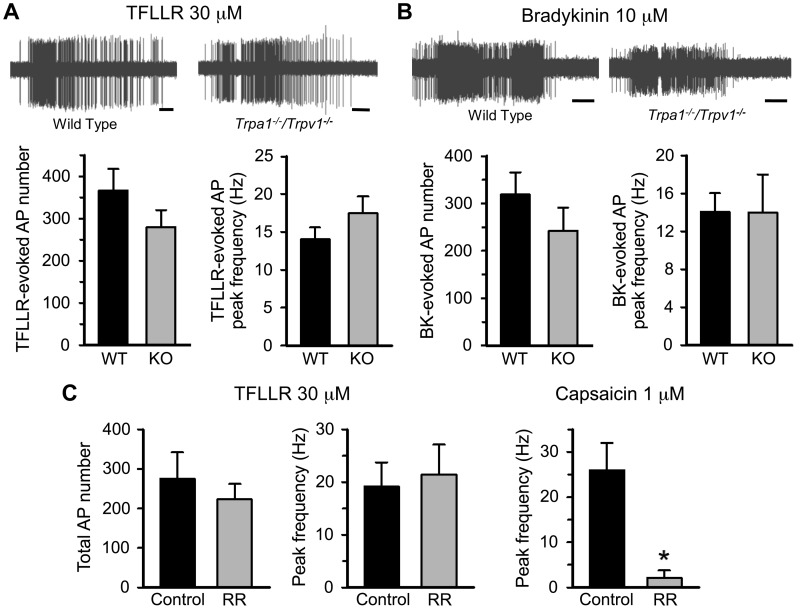Fig. 5.
Protease-activated receptor 1 (PAR1) activation-induced action potential discharges in bronchopulmonary C-fibers is not affected by genetic or pharmacological inhibition of transient receptor potential (TRP) channels. A: representative recordings (top) and averaged total numbers and peak frequency (bottom) of TFLLR-evoked action potential (AP) firings in bronchopulmonary C-fibers from wild-type (WT, n = 24) and Trpa1−/−/Trpv1−/− double-knockout (KO, n = 14) mice. B: representative recordings (top) and averaged total AP number and peak frequency (bottom) of bradykinin (BK)-evoked AP discharges in WT (n = 16) and Trpa1−/−/Trpv1−/− double-KO (n = 8) mice. Horizontal calibration bars under the recordings in A and B represent 10 s. C: averaged total AP number and peak frequency of TFLLR-evoked AP discharges (left) and mean peak frequency of capsaicin-induced AP firings (right) in C-fibers under control conditions (n = 6 for both agonists) and after treatment with 30 μM ruthenium red (RR, n = 6 for both agonists). *P < 0.001 (unpaired t test).

